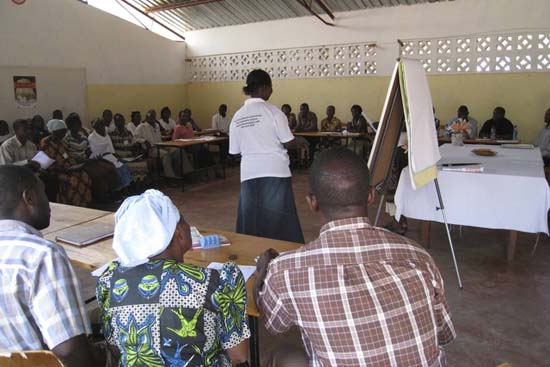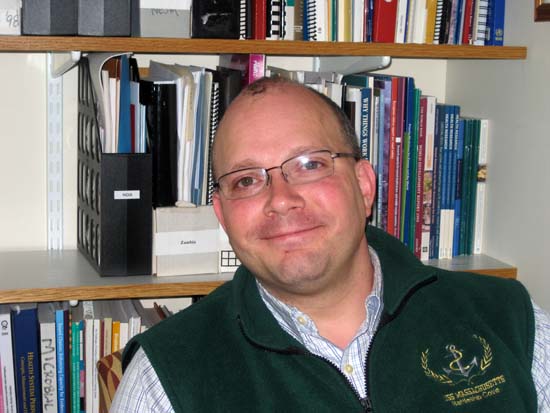Simple Interventions Drastically Cut Zambian Infant Mortality
SPH findings could have broad implications

The neonatal mortality rate in Zambia is about 34 deaths per 1,000 live births, a figure well above that of more developed countries.
Now a finding by a team of BU School of Public Health international health researchers shows high potential for saving lives in remote settings like rural Zambia: training community birth attendants there in a simple newborn resuscitation procedure reduced neonatal deaths by nearly 50 percent.
The team from the BU Center for Global Health and Development found that training and equipping Zambian traditional birth attendants (TBAs) to perform a neonatal resuscitation intervention led to a net reduction of about 18 deaths per 1,000 live births in the first 28 days of life—a significant reduction in Zambia’s overall neonatal mortality rate of about 34 deaths. Their findings appear in a recent issue of BMJ (formerly the British Medical Journal).
“We essentially showed that there is a method, very simple and inexpensive, to reduce neonatal mortality by about half,” says study lead author Christopher Gill (below), an SPH associate professor of international health. “This is the first high-quality study, using a randomized control methodology, to show unambiguously that a neonatal resuscitation protocol can be used to save lives. It’s hugely encouraging.”

The LUNESP (Lufwanyama Neonatal Survival Project) study was a large-scale trial in the rural Lufwanyama district of Zambia, where access to health care facilities is extremely limited.
Researchers worked with Zambian traditional birth attendants—community members who attend villagers giving birth—to gauge the impact of a package of neonatal interventions.
Birth attendants were divided into two groups, one using the existing standard of care in attending deliveries, and the other receiving extra training aimed at preventing neonatal hypothermia and birth asphyxia. Globally, at least 10 percent of otherwise healthy newborns experience inadequate respiration at birth, a problem often compounded by hypothermia from failure to immediately dry and warm the infants.
The trained attendants were instructed to dry and swaddle a newborn in a dry blanket immediately, to suction the infant’s mouth and nose with a rubber suction bulb, and when indicated, to stimulate breathing by rubbing the infant’s feet or back, or in cases of inadequate respiration, to use a tube-mask to resuscitate the infant.
Nontrained attendants followed traditional practices, wrapping the infant in thin cloth and giving minimal attention to clearing the airways, sometimes by wiping the infant’s nose with a cloth.
Among 3,497 deliveries, mortality in the first 24 hours of life was significantly lower for those delivered by trained attendants—7.8 deaths per 1,000 live births, compared to 19.9 per 1,000 births for the nontrained group. Deaths caused by birth asphyxia were reduced by 63 percent among infants delivered by the trained attendants, the study found.
“Given recent estimates that approximately 800,000 infants die each year due to birth asphyxia, these findings have broad public health relevance,” the research team says.
A second intervention involved training the attendants to recognize symptoms of sepsis in the first four weeks of life, and to administer a dose of oral amoxicillin to infants before referring them to a health center for further care. While this intervention was found to be effective—with lower rates of neonatal mortality during the second to fourth weeks of an infant’s life—the difference did not reach statistical significance.
“While early identification and treatment of sepsis is important,” Gill says, “we found that most of the deaths were prevented in the first hours of life.”
The study provides evidence that community members who serve as birth attendants can perform a vital role in access to health care.
“In the context of a highly dispersed, rural African community with very limited access to health care, traditional birth attendants were able to master a set of skills that allowed them to significantly reduce neonatal mortality,” the study concludes. “This was accomplished in a population of women TBAs with very low rates of formal education and under austere conditions.…We believe this approach has high potential to be applied in other resource-constrained settings.”
Since the study ended, the nonprofit organization Save the Children has stepped in with financial support to continue the interventions in Zambia, Gill says.
The BU Center for Global Health and Development is involved in a variety of research studies aimed at improving infant and child survival by training and empowering community health workers in Africa and other regions of the world.
The LUNESP study was funded by a cooperative agreement between Boston University and the U.S. Agency for International Development. Additional support was provided by a Neonatal Resuscitation Program Grant from the American Academy of Pediatrics and UNICEF.
The full study is available here.
Watch a video of Christopher Gill describing his research here.
Lisa Chedekel can be reached at chedekel@bu.edu.
Comments & Discussion
Boston University moderates comments to facilitate an informed, substantive, civil conversation. Abusive, profane, self-promotional, misleading, incoherent or off-topic comments will be rejected. Moderators are staffed during regular business hours (EST) and can only accept comments written in English. Statistics or facts must include a citation or a link to the citation.